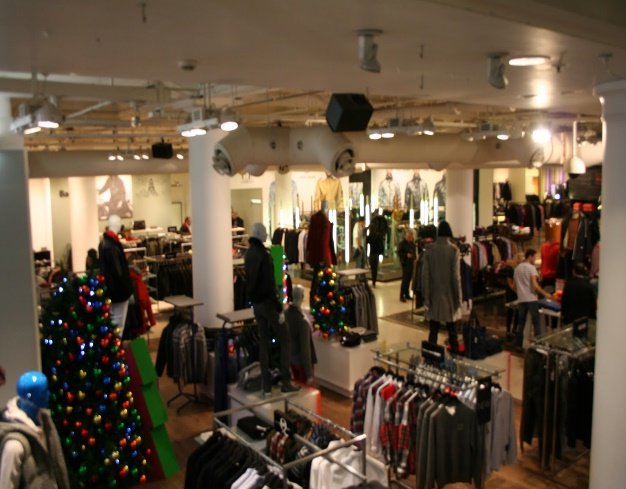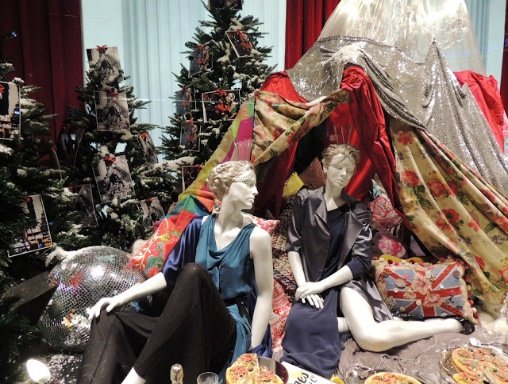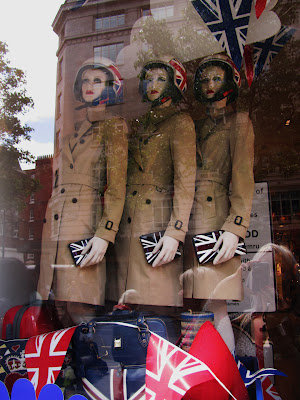Visuals



Background
Selfridges is a UK-based department store renowned for it’s superior retail offerings. It is in three key areas within the country; London, Manchester and Birmingham with two stores in Manchester. Customers can find the company’s stores at Oxford Street, Trafford Centre, Exchange Square and Birmingham respectively. Additionally, the company has an online presence where it sells it’s products to persons in the UK. Selfridges started in 1909 under the leadership of Gordon Selfridge. He wanted to create a fun-filled shopping experience.
Therefore, he used visual displays and other strategies to create this image. The company underwent expansion and opened provincial stores. However, various retailers such as John Lewis bought these outlets; as a result, the firm only has four stores. The firm competes with organisations such as Harrods, Harvey Nichols, House of Fraser as well as John Lewis. It’s flagship store has 6.floors and over half a million square feet of shopping space.
Market position
Selfridges may be regarded as an upmarket retailer as most of the products are brand names. Furthermore, the chain has fewer retail outlets than it’s closest competitors – Harvey Nichols and John Lewis – yet it makes more sales than most of these organisations. The firm has differentiated itself from the competition by investing in in-store aesthetic, as well as it’s image (Berman 2006). In essence, the company is one of the most profitable retail brands in the UK.
It can, therefore, be stated that the organisation has secured it’s top market position through frequent innovations as well as brand diversification. When one enters a Selfridge store, one is likely to find prices visibly displayed on the products. Clients are likely to concern themselves with price only to a small extent as mid-high to high end prices are the norm. Most of them would enter the chain for the merchandise sold as well the shopping experience.
Top luxury designers
Some of the brands that one can find at the chain store include Ralph Lauren, Paul Smith, Alexander McQueen, Hugo Boss, Barbour, Vivien Westwood, Givency, Roksanda Ilincic, Roland Mouret, Stella McCartney, Maiyet, Valentino, Erdem and many more.
Customer base
Selfridge’s appeals to local and foreign consumers equally; this strategy is slightly different from competitors like Harrods who focus on tourists as their main client base. Such a balanced strategy is useful for sustainability during the off-season (Brooks 2012). International consumers come to the store from countries like Russia and China. Selfridges even has Mandarin-speaking personnel to assist such visitors.
The demographic appeal of the firm is large as it stocks some of the widest varieties of designer brands. Upscale consumers have an equal chance of finding something appealing at Selfridges as middle income consumers. H&M, Primark, and Helmut Lang are just are a few of the brands that demonstrate the company’s diverse customer base.
Most of the organisation’s sales occur at the London flagship store as luxury brands do not have as much demand in Manchester and Birmingham. One may also assert that the firm targets young consumers. Selfridge’s unique selling point is ‘the fun shopping experience’. Use of theatrical elements in visual designs creates that effect and thus attracts young consumers.
Window displays as marketing tools
The organisation has won awards for it’s bold and dramatic window displays. It combines apparel and art to attract the attention of potential consumers. Since the chain sells luxury brands, the target audience largely determines the window display designs. Fashion and art are effective at showcasing designer’s items at the stores.
Sometimes, the company may adopt themes that reflect a specific season. For instance, during Christmas, one is likely to find window displays that further that theme. Additionally, the company also tries to capture it’s unique history and heritage through the displays. The organisation started in order to make shopping fun, so these elements are always evident in the displays.
Tourists often respond to their dramatic displays by entering the stores and trying out something new. Sometimes a window display may consist of a three-dimensional mountainside landscape or a typical English, living room. In other scenarios, the company uses celebrity look-alikes, such as the famous David Beckham display, or it may use their signatures to sell their merchandise (Collins 2010).
How Selfridges supports new and upcoming designers
Selfridges has a series of projects that nurture young talent. One such initiative is the Bright Young Things venture. Here, fifteen unknown designers designed their own window displays showing signature designer items. This guaranteed a fresh addition to the collections found in the store.
The company also introduces new product-segments, such as African wear into it’s stores. In 2012, Selfridges announced that it would have a pop up store containing Nigerian designs. Some of them would represent new and upcoming design houses in the country’s capital. Such initiatives indicate that the departmental store does a lot to support young designers. It’s clients have come to expect a dose of new and relatively unexposed designs.
References
Berman, E 2006, Retail management: A strategic approach, Prentice Hall, New York.
Brooks, D 2012, How did Selfridges break the £1bn sales mark? Web.
Collins, N 2010, ‘Selfridges named world’s best department store’, The Telegraph, p. 5.